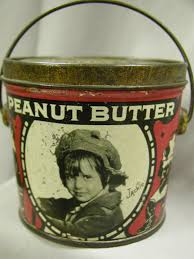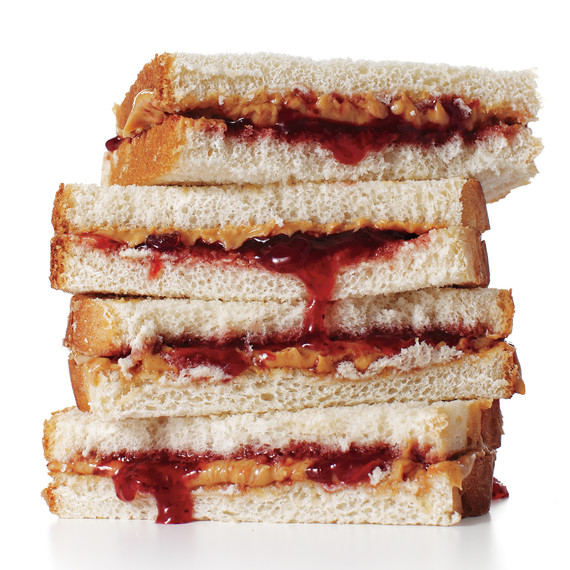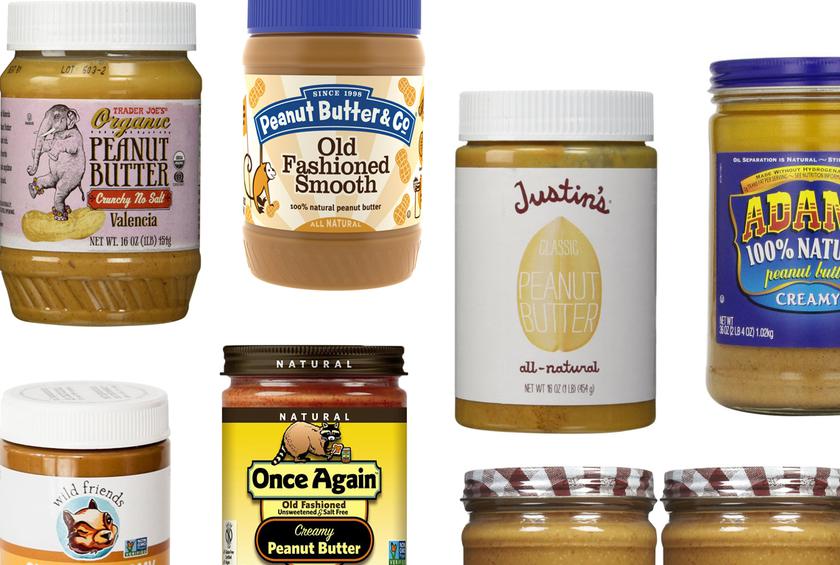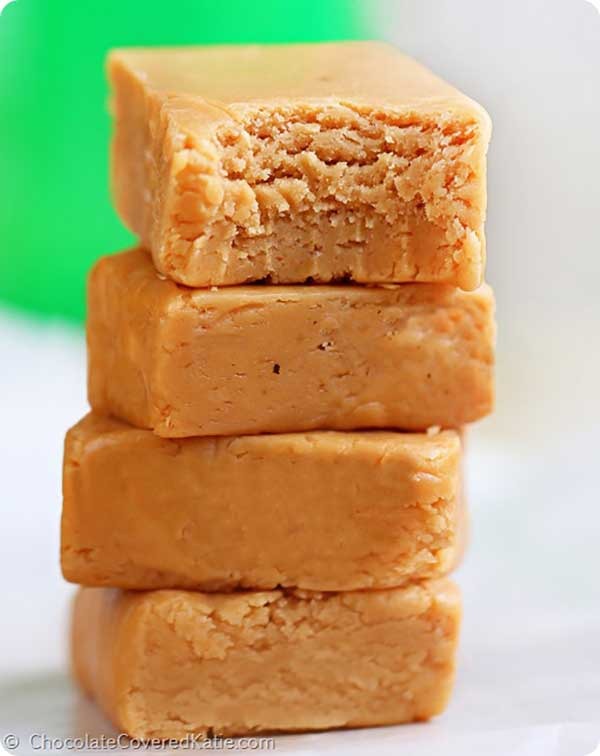How to Buy the Healthiest Peanut Butter and a Recipe for HEALTHY Peanut Butter Fudge

Let’s talk about peanut butter. Here are a couple fun facts to know and tell at the dinner table: Marcellus Gilmore Edson patented peanut paste in 1884. In 1895, Dr. John Harvey Kellogg (the fellow who more or less invented corn flakes) patented a new process for making peanut butter. He then advertised it as a protein for people without teeth. Peanut butter continued to gain popularity over the next century, and the rest is history.

Aside from those who have peanut allergies, most people like peanut butter very much. There are good reasons to like it—it’s an affordable source of plant protein, and it’s loaded with fiber, and carbohydrates. But there’s more to this lowly food:
Peanuts are high in antioxidants. In fact, they have as many antioxidants as many powerful fruits, such as strawberries. Antioxidants counteract oxidative stress that leads to chronic disease. One of peanut butter’s most potent antioxidants, resveratrol, helps reduce risk of cardiovascular disease, Alzheimer’s disease, and cancer.
Besides being good for your heart and brain, and protecting against cancer, peanut butter helps normalize high cortisol levels (due to its high content of phtyosterol). Thus this is a super food for endurance athletes.

All this said, however, there are some cautions to heed IF that peanut butter sandwich is going to be a healthy one. Namely:
Watch out for added sugar. Read your label. It’s appalling how many brands add this junk.
Watch out for added salt. Same advice—read your label. Salted peanut butter can carry up to 50 to 75 milligrams of sodium per tablespoon.
Watch out for added oils. As if 15 grams of naturally-occurring fat in every two tablespoons isn’t enough, many brands (Skippy®, for instance) add hydrogenated fat. And many of the “no-stir” peanut butters contain palm oil. Aside from the serious ethical and environmental concerns palm oil addition carries, the plain fact is, you don’t need the extra fat.
Watch out for excess aflatoxins, pesticides, and GMOs. The best bet to avoid this stuff is to choose organic. I used to think grinding my own at our local whole foods store was smart. Turns out, though, research shows commercial organic brands contain less of all these offenders.

So in a nutshell, here’s how to be sure you’re getting the healthiest peanut butter available:
Choose organic to reduce pesticide and GMO exposure;
Make sure it contains only peanuts, without unnecessary extras like sugar and oils;
Avoid the grind-your-own option due to aflatoxin risk; and
Choose kinds that separate; healthy peanut butter needs stirring.
I’ll close this peanut butter tutorial with a recipe for a healthy (well, more so than most) peanut butter treat—peanut butter fudge (courtesy of www.chocolatecoveredkatie.com). It can’t get much better than a healthy fudge that’s sweetened naturally without heavy fats or corn syrups. This one specifically uses a banana to get that extra sweet kick and still has the fudgy consistency you would get from the bakery versions. And, because this recipe is made by using coconut oil, it also reaps major benefits like lasting energy and weight loss. So, just be sure you’re using a healthy peanut butter and forgo the guilt of reaching for a treat!

HEALTHY PEANUT BUTTER FUDGE
1 cup peanut butter (or allergy-friendly alternative such as almond butter)
2 large bananas
2 teaspoon vanilla extract
1/8 teaspoon salt (if using salted peanut butter; if using non-salted peanut butter, increase amount to 1/4 teaspoon salt)
4 tablespoons melted coconut oil
4 tablespoons pure maple syrup
In a blender, mix all ingredients until completely smooth. Scoop into a small plastic container OR parchment-lined glass container OR candy molds OR mini cupcake liners. (You have options!) Freeze until firm. Due to the melty nature of coconut, this fudge is best stored in the freezer.
- www.ysiantiquesandcollectibles.com
- www.historymagnets.ergoiamtoo.com
- www.marthastewart.com
- www.thedailymeal.com
- www.chocolatecoveredkatie.com
 Alice Osborne
Alice Osborne
Weekly Newsletter Contributor since 2006
Email the author! alice@dvo.com
